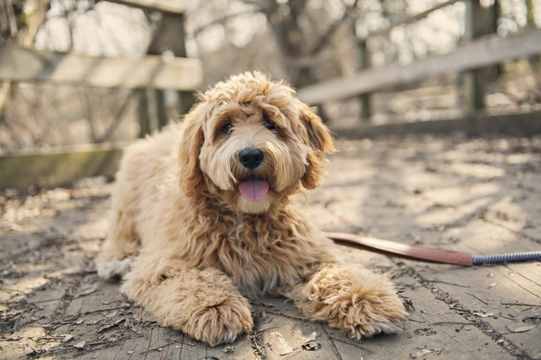
Ten things you need to know about Labradoodles before you buy one
The labradoodle is one of the most common and popular dog types in the UK today, and becoming ever-more popular every year too, as people begin to get to know the dogs of this type in their local area and word spreads about their good points.
This means that every year, thousands of people consider choosing a labradoodle as their next dog, and start looking around and doing their research as part of the process of making a final decision.
Labradoodles have a huge amount of positive traits and this ensures they have a broad appeal with many different types of prospective owners – but no dog type universally suits everyone, and the labradoodle is no exception.
If you are wondering if the labradoodle is the right dog for you or if you’re researching dog breeds and types to narrow down your options, this article will tell you ten important things you need to know about labradoodles, before you go ahead and buy one. Read on to learn more.
Labradoodles are bred by crossing poodles and Labrador retrievers
The Labradoodle is a crossbreed or hybrid dog type, which results from the crossing of a poodle and a Labrador retriever.
Any given labradoodle may have one parent from each breed, or be produced from subsequent generations of labradoodles – or labradoodles crossed back to either one of the two parent breeds too!
This means that labradoodles are not pedigree dogs
Because labradoodles are so common today that most dog lovers recognise them on sight and also because they have a specific name for their crossing – again, most dog lovers know what a labradoodle is – many people assume that they are a pedigree breed.
However, this is not the case, and labradoodles are not recognised by the Kennel Club, and so cannot be registered with them nor entered into breed shows.
Their size can be quite variable
Labrador retrievers are large dogs, but poodles come in three sizes – toy, miniature and standard. It is miniature and standard poodles that tend to be used to produce labradoodles, and there is a lot of variance between the sizes of a miniature versus a standard poodle – which means that labradoodles can be quite variable too.
They can range in height from around 30-70cm tall at the withers, and vary in weight between 10-40kg.
The type of coat a Labradoodle has is important to many people
Any given labradoodle’s coat can vary from like that of a Labrador to like that of a poodle, with most being somewhere in the middle. Generally, a more poodle-like coat is more desirable among buyers, and this is the type of coat that most labradoodle breeders try to achieve.
This is because the poodle coat does not shed much hair, and instead, loose hair tangles in the rest of the coat and is trapped there until it is combed out. This in turn means they don’t make as much mess around the home.
Labradoodles are not hypoallergenic – and there is no such thing as a hypoallergenic dog!
The low-shedding coat many labradoodles have is their most important feature for many people, because it can mean that they are less likely to trigger allergies in people who are commonly otherwise allergic to dogs.
However, labradoodles are often described as hypoallergenic as a result of this, which is untrue – there is no such thing as a hypoallergenic dog, and no way to guarantee that a dog won’t trigger allergies, even if their coats hardly shed at all.
Labradoodles are really smart
Both of the labradoodle’s two parent breeds fall within the top ten list in Stanley Coren’s ranking of canine intelligence breed by breed, and naturally, the labradoodle is a really smart dog as a result of this too.
They tend to be very easy to train
The labradoodle’s high intelligence, coupled with their highly personable natures and general enjoyment of everything they do, tends to ensure that labradoodles are an easy dog type to train, and that they can learn and execute a wide range of different skills and commands.
They tend to pick up new commands very quickly, and actively enjoy training.
Labradoodles need a lot of exercise
Labradoodles are also very high energy dogs, which need at least a couple of long, interesting and varied walks each day in order to thrive. This makes them a good fit for active families that like to walk and spend plenty of time with their dogs, but means that they are not a good choice for people who are looking for a quieter dog or that enjoy a more sedentary lifestyle.
They generally get on very well with children
Labradoodles are kind, friendly, inquisitive and playful dogs that very much enjoy human company, and they are often particularly notable as a dog type that tends to get on very well with children.
They enjoy the entertainment and company that children can provide, and often bond strongly with the younger family members. They also tend to be reliable and trustworthy with children, and not phased by strange children or a lot of noisy play!
Labradoodles are very versatile
Labradoodles possess a wide range of great traits that combined, ensure they are versatile enough to fit in well with all sorts of homes, living situations, and working environments.
As well as making for great pets, they can also be a good pick for canine sports like agility, and also, for work as therapy dogs, assistance dogs, and in working roles too.
In fact, labradoodles are often chosen for training as assistance dogs for people with hearing or vision problems, as they tend to have those low-shedding coats that may make them viable for people who might otherwise be allergic to a standard assistance dog.



